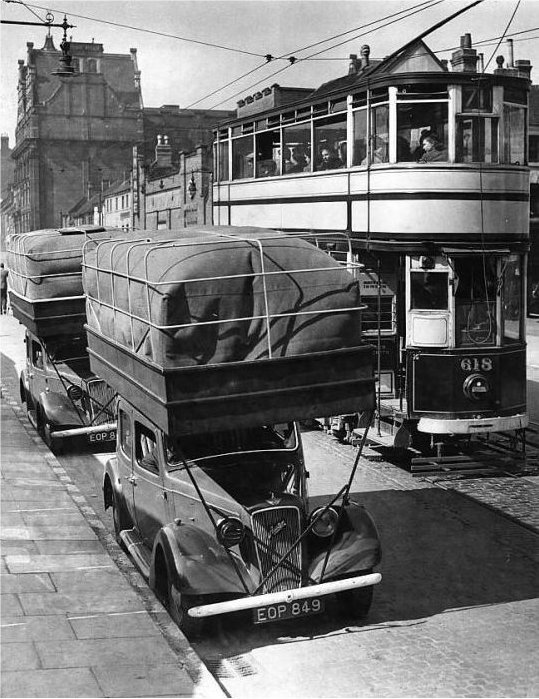The gas produced by burning wood is fed via pipes directly to the vehicles internal combustion engine.
This kind of modification became very popular during World War 2 due to severe gasoline shortage.
There are no miniature gasification units that vehicles can carry along in trailers.

Instead, coal gas vehicles carry the gas in enormous gas bags mounted on top of vehicles.
Besides, fabric bags were much cheaper and easier to build than metal tanks.
The most obvious drawback is that the bags had to be comically large.

Coal gas also have much lower energy density that LPG or CNG.
To replace one liter of gasoline, two to three cubic meters of gas was needed.
The gas bag was strapped to this wooden framework.

Gas bag vehicles also suffered from carburator fires, loud bangs and engine damage.
Coal-gas vehicles became defunct as soon as gasoline became available again after the end of the Second World War.
References:# Gas bag vehicles,Low tech magazine# Coal-gas Powered Vehicles,www.douglas-self.com




